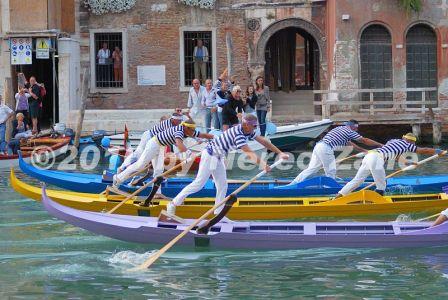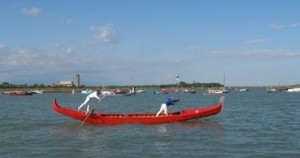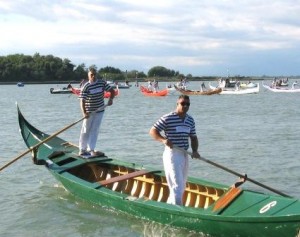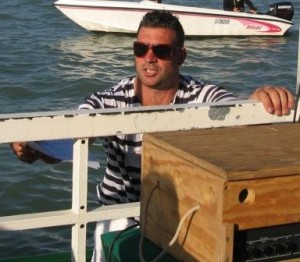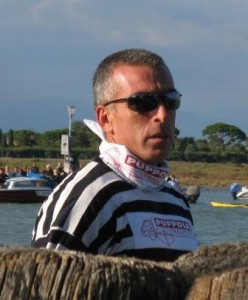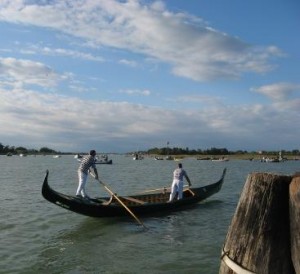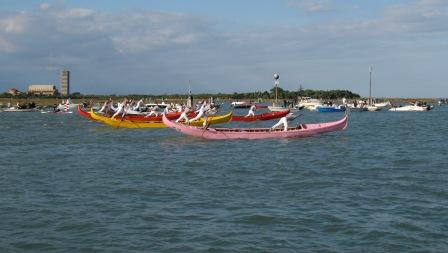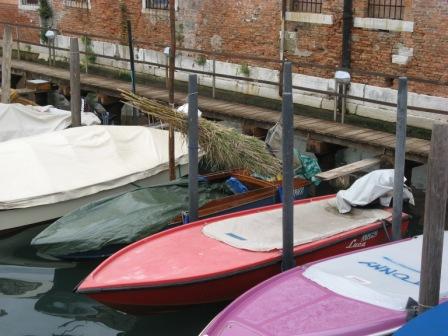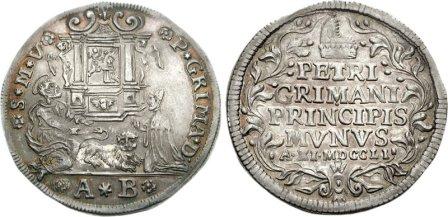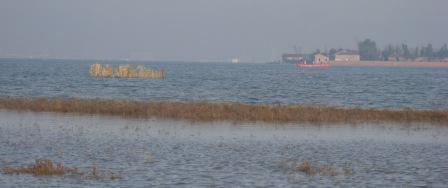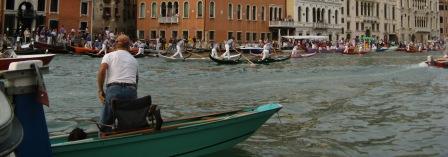Today I woke up to October, and while you can’t say we’re in the depths of autumn, I’m struggling to accept that summer is no more.
It’s not that fall is so bad — in fact, it has many excellent qualities — but there is one thing about it which I object to. No, it’s not the darkness creeping ever more deeply into the edges of the day, nor the descending temperatures, nor the having to dress with all those layers of clothing that make me feel like some mongrel foot-soldier preparing for battle — brigandine, puttees, Sherden helmet, gauntlets.
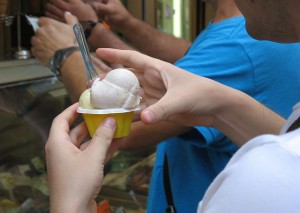
I know, it doesn’t actually die, it just sort of goes into hibernation. What dies is its natural habitat, which consists of heat, sun, and fatigue. Of course I could eat ice cream at Christmas, but much as I love it, I don’t see the point.
Little-known fact: Summer was actually invented by Italian gelato-makers. Until you’ve eaten gelato in the sweltering depths of an endless July afternoon here in the cradle of the Renaissance, you haven’t tasted it in all its extraordinary glory, its divine combination of flavor, texture, and temperature. It’s the coldness that takes it over the top, far beyond fudge, and I’m convinced that people who live with air conditioning eventually lose their capacity to completely perceive the exquisiteness of the sensation of that frigidity on the tongue. You have to have reached some tertiary level of heat prostration to really appreciate it. Sorry: No suffering, no redemption. No sprinkles.

The great thing about ice cream here is that people regard it as food. More than food, something your body requires for survival in the summer the same way it requires, say, water. It’s not entertainment, it’s nutrition. Articles will appear (I love them) in which doctors and studies are cited praising its benefits to the human body. To hear them talk, you’d think you’d have to eat it even if you hated it.
“Eat gelato,” they say. “The summer weather demands it. Your body requires it. Have as much as you like, it can’t hurt you, it’s the only thing that can help. It’s crucial for everyone — babies, the bedridden, the new litter of puppies. It’s better for you than Omega-3 fish oil.” Well, they don’t say that, but if they did, I’d believe it.
Here’s an example: Somebody asked on a web forum how many calories are in a gelato that’s served in a cup. Note the clever way of putting the question so that it’s impossible to answer. But an intrepid reader didn’t hesitate: “Last week I heard a report on Tg2 [television station],” he replied, “that said that gelato has very few calories. I think they said 50 calories per cone.” No mention of how many scoops the cone contains, or even the dimensions of said cone. But 50 calories sounds about right to me.
Ice cream is a health food. You have to come to Italy to discover that fact.
One reason, among many, is its lower fat content compared with American ice cream. Another is the lavish use of fresh fruit in season. Either of those beneficial aspects can be annulled by adding whipped cream, of course. Not to mention that you can also get simple slabs of frozen cream. But your average gelato will not be the fat bomb that goes for premium prices back in the US and A.
The Food and Drug Administration (FDA) in the US stipulates that to be called “ice cream,” the product must contain no less than 10 percent butterfat. The average is 12 percent. Premium ice creams in the US can contain as much as 20 percent butterfat.
Italian gelato, on the other hand, contains 7-8 percent butterfat. Funny, I don’t miss that other four to 12 percent fat at all. It only means I can eat more of it.
There are a few gelaterie around Venice which in my opinion are worth re-routing your wanderings to visit. The one in the middle of via Galuppi on Burano, the one at the foot of the iron bridge on Murano. (They don’t have names, or I’d give them to you.) The gelateria San Giorgio right here on via Garibaldi.

I realize that opinions vary. I also realize that there are cultures in which red-bean flavor is more appealing than chocolate/orange fondente. But anyone knows great gelato when they taste it.
Here’s something you may not have known: March 24 is the European Day of Ice Cream. Surely this hasn’t been instituted to jolt people into thinking of ice cream. It must have been to jolt people, such as European Parliament members, into thinking about what new laws and special ordinances they can devise to help ice cream propagate more profusely everywhere.
So who is the patron saint of ice cream makers and/or eaters? There doesn’t seem to be one, but we could construct him or her out of the following pieces: Saint Lawrence (patron saint of candy makers), St. Martha (dieticians), Saint Honorius (bakers and sweets), and St. Brigid (dairy products). Also Saint Dolley Madison.
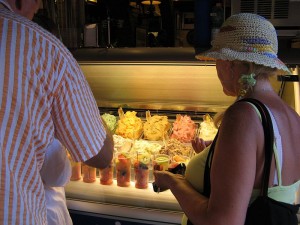
But great ice cream seems not to depend on geography — in Italy, I mean. Not trying to award medals, but I’ve had great gelato all over the map. There was that little storefront in Torino, and Vivoli in Florence, not to mention San Crispino in Rome. One of the most dazzling frozen treats I’ve ever eaten was served at lunch at a club in Naples. It was a watermelon sorbetto, deep red and with a rich fruity flavor, studded with small chips of bittersweet dark chocolate masquerading as the seeds. Technically not gelato, but unforgettable. And cold.
I suppose the very best ever — why try to categorize? It’s ridiculous — was in a small shop run by an old man in a hillside village up behind Trapani, in Sicily. There were only a few flavors; I tried the “cassata,” but it was only a million times better than normal cassata. The flavor, the texture, the exceptionally perfect level of cold, it all came together into something I am convinced that they eat in heaven.

I’ve had celestial gelato in the usual flavors (strange, in the homeland of espresso I have yet to find a coffee ice cream that means it). And I’ve also had some of the unusual flavors: honey, rose, pomegranate, walnut and fig, pumpkin, carrot and celery (surprisingly good — think carrot cake). Also apple and ginger. Ice-cream makers, like artists anywhere, are on some kind of continual quest.
A few years ago, an Italian legislator got his name in the paper because of his complaint about the deplorable quality of the ice cream served in the Parliament cafeteria. Does this tell us more about the quality of the ice cream, or of the public servant to whom it was served? Yet complaining about inferior gelato, at least in the summer, doesn’t seem totally crazy. And you can’t expect him to be complaining about funding for public schools in August. Nobody would care.
Where in the USA do they eat the most ice cream? It isn’t Mesa, Arizona. It’s Alaska. I don’t understand that. It must be the alimentary equivalent of Stockholm syndrome. That, or each Alaskan eats 200 gallons of it between Memorial Day and Labor Day.
More minutiae: In 2007, the USA led the world in ice cream production, yet New Zealand was the country that led the world in ice cream consumption. Italy is merely sixth. More ice cream is eaten in Sweden and Finland than in Italy. There it is again: The colder the country, the colder the food? Bizarre. Unless they’re eating aquavit-flavored gelato. That could work.
So where do gelato makers go in the winter? The jungles of Costa Rica, or perhaps the Okavango Delta of Botswana? I can see them there, up in the trees, sitting on tiny eggs soon to hatch new gelato makers. Don’t laugh, there are more here every year.
I’m going to miss it, though. Prometheus brought fire to humans, but I want to meet the person who brought gelato.


